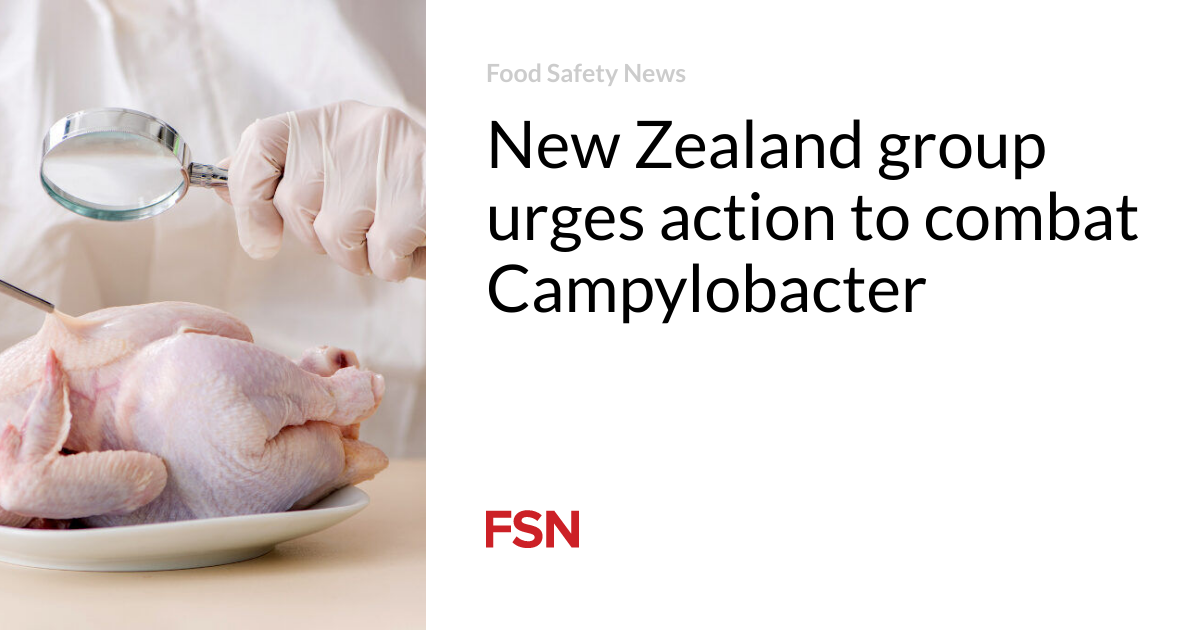A group in New Zealand has called for action to tackle Campylobacter in fresh chicken meat.
The Public Health Communication Centre (PHCC) said the government should consider a formal inquiry into the issue. The PHCC also said responsibility for managing food safety should shift from the Ministry for Primary Industries (MPI) to an independent regulator.
In New Zealand, contaminated fresh chicken meat is the main source of human Campylobacter infection. An increase from 1980 to 2005 came alongside a rise in chicken consumption. Rates of reports and hospitalizations halved in 2007 after regulatory measures were introduced to reduce contamination levels in fresh chicken meat tested in processing plants.
In the 17 years since this intervention, the report rate for campylobacteriosis declined by 30.4 percent, while the hospitalization rate rose by 69.7 percent. Scientists said the rise in hospitalizations suggests a substantial increase in Campylobacter infections since 2008.
The PHCC said an epidemiological study could help understand the inconsistency shown by the rise in the hospitalization rate during 2008 to 2023 while notifications were falling.
From 2008 to 2024, researchers estimated contaminated chicken meat resulted in 622,000 cases and 85,200 notified cases. They put the number of hospitalized people at 9,100, including 68 deaths. The economic cost was NZ $1.4 billion (U.S. $840 million).
Co-author Professor Nick Wilson said: “It seems remarkable that an epidemic of this scale, impact (including death and disability for some), and cost has been allowed to continue unchecked for so long. This neglect is particularly alarming since this epidemic has a single dominant source, and the tap could have been turned off rapidly if any of multiple governments had chosen to tighten existing regulations.”
New Zealand Food Safety response
Vincent Arbuckle, New Zealand Food Safety’s deputy director-general, said there were significant limitations with the methodology used in the analysis and conclusions were not supported by the evidence.
“Between 2006 and 2020 reported rates of foodborne Campylobacter infections have halved. In 2020, New Zealand Food Safety set the target of reducing the rate by a further 20 percent. This milestone was reached at the end of 2024, when rates of foodborne Campylobacter infections acquired in New Zealand fell to 70 cases per 100,000,” he said.
Arbuckle said the agency keeps an open mind about changes that can reduce Campylobacter infection but will not consider things that are not founded on good evidence.
The PHCC called for measures to reduce contamination levels on chicken at the point of sale, such as safer allowable limits, supported with microbiological testing. Contaminated chicken could be diverted through safer channels, such as frozen and pre-cooked products.
Regulators should mandate labeling of fresh chicken meat to highlight the risk of infection and how to minimize it, such as not washing the product and adequate cooking.
The pathway from contaminated meat to human infection is usually not from eating the chicken itself, unless it is undercooked. The predominant route is likely to be through cross-contamination from raw chicken, including through direct handling, contaminated surfaces in kitchens, and cross contamination of other foods prepared in the same settings.
(To sign up for a free subscription to Food Safety News, click here.)
Source link
